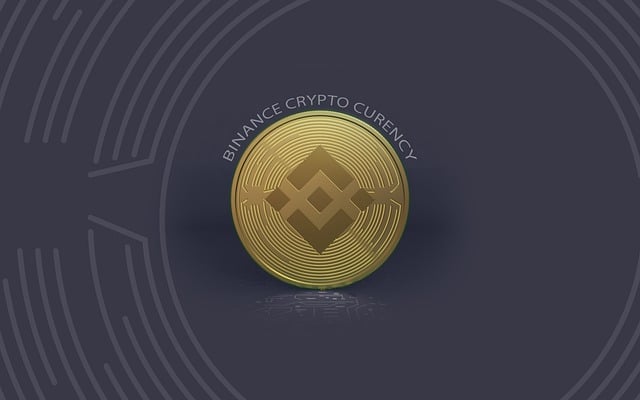Fees Binance Futures Explained
Author: Jameson Richman Expert
Published On: 2025-10-22
Prepared by Jameson Richman and our team of experts with over a decade of experience in cryptocurrency and digital asset analysis. Learn more about us.
Fees Binance Futures can materially affect profitability for active derivatives traders. This comprehensive guide breaks down how Binance Futures fees work — maker vs taker fees, funding rates, VIP tiers, fee calculation examples, ways to reduce costs, and how Binance compares to other derivatives venues. Whether you’re scalping with high leverage or holding a hedged position, understanding fees binance futures will help you trade smarter and keep more of your gains.

Why fees binance futures matter
When trading perpetuals or delivery futures, every basis point counts. Trading fees, funding payments, and other costs accumulate over time and can turn a profitable strategy into a losing one. Fees Binance Futures charges influence effective returns, required break-even moves, and the risk profile of leveraged positions. This article provides actionable steps to calculate and optimize your fee burden so you can make informed trading decisions.
Overview: types of fees on Binance Futures
- Transaction fees (maker/taker): Charged when opening and closing futures positions. Makers (providing liquidity) typically pay lower fees than takers (taking liquidity).
- Funding rates: Periodic payments exchanged between long and short holders in perpetual contracts; not charged by the exchange but critical to cost of holding.
- Liquidation and insurance costs: Not explicit fees but potential losses if positions are liquidated; the insurance fund may cover bad debt.
- Settlement fees (delivery futures): For fixed expiry contracts, there can be settlement mechanisms; check the contract terms.
- Miscellaneous: Withdrawal fees (spot), cross-margin funding costs, and potential conversion fees when using native tokens for discounts.
For the most current official fee schedule check the Binance Futures fee page (official source): Binance Futures fee schedule.
Maker vs Taker: the core fee mechanics
Fees Binance Futures applies are usually split into maker and taker rates. Understanding the difference is essential:
- Maker orders add liquidity to the order book (limit orders that don’t immediately match). Makers often receive lower fees — sometimes even rebates depending on tier and instrument.
- Taker orders remove liquidity (market orders or aggressive limit orders that match existing orders). Taker fees are higher because these trades consume liquidity.
Example (illustrative): If the maker fee is 0.02% and the taker fee is 0.04%, opening and closing a position with taker orders would cost 0.08% of notional (0.04% + 0.04%). Using maker orders for one or both sides lowers the total cost.
How fees are applied
Fees are usually applied on the notional value of the trade (price × contract size), not on margin posted. So even if you use 10× or 50× leverage, your fee is calculated against the full position size, not just your initial margin.

Funding rates: the hidden recurring cost
Perpetual contracts do not settle; instead, funding payments align futures prices with the spot index. The funding rate represents payments between longs and shorts. It can be positive or negative:
- Positive funding: Longs pay shorts.
- Negative funding: Shorts pay longs.
Funding is exchanged at set intervals (e.g., every 8 hours on many platforms). Even if maker/taker fees are low, a high unfavorable funding rate can erode profits quickly, especially for large or highly-leveraged positions.
Funding payment example
Suppose:
- Position notional: $100,000
- Leverage: 10× (initial margin $10,000)
- Funding rate: 0.05% (positive; longs pay)
Funding payment = notional × funding rate = $100,000 × 0.0005 = $50 per funding interval. If funding repeats 3× a day, that’s $150/day, which quickly compounds — equating to ~1.5% per 10 days. Traders holding positions for days should always factor funding into expected returns.
Binance Futures fee tiers and VIP structure
Binance uses a tiered fee model where trading volume (30-day notional) and BNB or BUSD balances can move you through VIP levels with lower maker/taker fees. VIP tiers also affect maximum margin, API limits, and other benefits. Check Binance’s page for the exact volume thresholds and tier benefits: Binance Futures fees & VIP tiers.
Key ways to reduce fees via tiers:
- Increase 30-day trading volume — bigger traders pay less per trade.
- Hold and use BNB or BUSD where applicable to receive fee discounts (spot and in some futures contexts).
- Participate in promotional programs and referral structures.
Practical tip
Estimate your monthly notional volume and compare the fee savings vs the capital you’d commit to reach higher VIP levels. For many retail traders, focusing on execution (maker orders) and managing funding exposure yields faster savings than trying to climb tiers.
Real-world fee calculation — step-by-step
Let’s walk through a full example combining fees and funding to estimate real cost of a trade on Binance Futures.
- Assumptions:
- Contract: BTC perpetual
- Entry price: $50,000
- Position size: 0.2 BTC → notional = $10,000
- Leverage: 10× → initial margin = $1,000
- Maker fee: 0.02% (opening), Taker fee: 0.04% (closing as a taker)
- Funding rate during holding: +0.01% per 8 hours (positive; longs pay)
- Holding period: 24 hours (3 funding intervals)
- Fees:
- Opening (maker): $10,000 × 0.0002 = $2
- Closing (taker): $10,000 × 0.0004 = $4
- Total transaction fees = $6
- Funding:
- Per interval funding = $10,000 × 0.0001 = $1
- Three intervals = $3
- Total cost = transaction fees + funding = $6 + $3 = $9
- As percent of initial margin = $9 / $1,000 = 0.9% cost for holding 24 hours.
This example shows how funding can be a material part of the cost structure for leveraged positions. Always calculate estimated break-even based on both transaction fees and funding.

Compare fees: Binance Futures vs competitors
When optimizing fees, compare Binance with other major futures exchanges. Below are common alternatives with referral links if you choose to open accounts and try fee structures yourself (useful for A/B testing strategies):
- MEXC: Competitive maker/taker fees and frequent promotions — open an account: Register at MEXC.
- Bitget: Offers copy trading and tiered fee benefits — register: Register at Bitget.
- Bybit: Strong derivatives liquidity and competitive fees — sign up: Register at Bybit.
- Binance: Market leader with deep liquidity and many instruments — open a futures account: Register at Binance.
Fee structures change frequently and promotions can temporarily shift the best venue for a strategy. Always test with small size first and factor in execution quality and slippage — not just headline fees.
Ways to reduce your fees on Binance Futures
- Use maker (limit) orders: Submit limit orders that add liquidity. Makers pay lower fees and sometimes receive rebates.
- Time your trades: Avoid market taker fills when spreads are wide or liquidity is thin; execute in more liquid sessions if possible.
- Leverage VIP tiers economically: If you trade large notional volumes, calculate if reaching the next VIP level reduces fees enough to justify extra volume or capital.
- Use cross-venue arbitrage carefully: If moving positions between exchanges, factor in withdrawal/transfer costs and slippage.
- Monitor funding rates: If funding is persistently expensive in one direction, consider hedged or shorter-duration trades.
- Promo codes and referrals: Exchanges often provide temporary fee reductions for referrals — these can lower costs during onboarding.
Execution tips to lower costs
Advanced traders use algos and TWAP/VWAP slicing to reduce market impact and convert potential taker fills into maker executions. Utilizing limit orders with small price improvements can flip a taker trade into a maker fill without losing execution quality.
Hidden costs and things many traders miss
- Slippage: Execution at worse-than-intended prices increases effective cost.
- Funding volatility: Unpredictable funding spikes during extreme market sentiment can surprise longs or shorts.
- Funding vs fee trade-offs: Waiting for maker fees might increase exposure to funding changes; model both.
- Cross-collateral conversions: If you use assets like BNB or stablecoins for margin, conversion mechanics can create small costs.
- Tax events: Realized profits/losses, wash-sale rules in some jurisdictions, and reporting requirements can create additional implicit costs (consult a tax advisor).

Advanced: modeling fees into strategy backtests
If you backtest futures strategies, always include an accurate fee model:
- Charge maker/taker based on whether the simulated order crosses the spread.
- Include estimated slippage dependent on order size relative to order book depth.
- Simulate funding payments based on historical funding rate series for the instrument.
- Factor in rollover or settlement mechanics for delivery futures.
Backtests that omit funding or assume unrealistically low fees will overstate returns and risk-adjusted performance. Many quant traders keep a rolling funding time series to model costs precisely.
Regulatory and safety considerations
When evaluating fees binance futures, also consider:
- Counterparty risk: An exchange’s reliability and insurance fund size matter as much as fees.
- Jurisdictional rules: Some jurisdictions restrict derivatives; check local law before trading.
- Transparency: Reputable exchanges publish fee schedules and insurance fund details; verify before moving substantial capital.
For background on futures contracts and their economic role, see the Wikipedia page on futures contracts: Futures contract (Wikipedia).
Where to go next: tools and resources
Learn more about market dynamics and trading tools that interact with fees:
- Funding rate trackers and historical data (available via exchange APIs).
- Order book depth analysis tools to estimate slippage.
- Automated trading bots to split orders and optimize maker fills — for example, read about automated solutions here: Best AI crypto trading bot — free.
- Market commentary and prediction pieces to situate your trading: see XRP and ETH outlooks linked below for context on derivative demand drivers (funding, leverage appetite):

Choosing the right exchange for your fee profile
Fees are only one part of the decision. Consider these variables when choosing between Binance, MEXC, Bitget, Bybit, and others:
- Liquidity: Higher liquidity usually means lower slippage and faster fills.
- Instrument coverage: Does the exchange list the contracts you need (altcoin perpetuals, delivery futures)?
- Fee structure and promotions: Compare maker/taker, VIP tiers, and referral bonuses.
- Execution quality and API reliability: Essential for high-frequency or algorithmic strategies.
- Safety and regulatory compliance: Look for a transparent insurance fund and track record for withdrawals.
If you want to test alternatives, here are quick registration links for major derivatives venues:
- Binance Futures (register with referral): Open a Binance account
- MEXC (register): Open a MEXC account
- Bitget (register): Open a Bitget account
- Bybit (register): Open a Bybit account
Frequently asked questions (FAQ)
Q: Are Binance Futures fees negotiable?
A: Fees are negotiable only by meeting public VIP tier criteria (30-day volume, margin balance) or via enterprise-level relationships. Retail traders can use referral discounts and promotions but cannot privately negotiate lower percentages.
Q: Does holding BNB reduce Binance Futures fees?
A: Historically, BNB discounts have been available mainly for spot fees. Binance applies different discount mechanics across product lines and occasionally offers futures fee discounts via promotions. Always confirm through the official fee page before assuming a discount applies.
Q: Is funding considered a fee?
A: Funding is not an exchange “fee” per se; it's a periodic transfer between traders long and short. However, it is a cost (or revenue) of holding a perpetual position and must be included in economic calculations.
Q: How often do funding rates change?
A: Funding rates update by schedule (commonly every 8 hours) and can change with market sentiment. During high volatility, funding rates can spike or flip sign rapidly.
Checklist before opening leveraged futures trades
- Check current maker and taker fees for the contract on Binance Futures official page.
- Review the latest funding rate and historical funding volatility for the instrument.
- Estimate slippage based on order size vs order book depth.
- Decide order type (maker-limit vs taker-market) and model both fee scenarios.
- Include funding payments in break-even and risk calculations.
- Confirm withdrawal and transfer fees if moving collateral across platforms.

Conclusion — make fee awareness part of your trading edge
Understanding and managing fees binance futures is essential for profitable derivatives trading. Transaction fees, funding payments, and slippage together determine the break-even threshold of any leveraged strategy. Use maker orders where possible, monitor funding rates, and compare venues when appropriate. Keep execution quality and liquidity in mind — the lowest headline fee does not always mean the lowest total cost.
For market context and instrument-specific outlooks that can influence funding and fee dynamics, consider reading recent analyses such as XRP price prediction — June 2nd, 2025, XRP: when to buy & sell in 2025, and a deep dive into Ethereum’s prospects: Will Ethereum be used in the future?. If algorithmic execution interests you, see automation options here: Best AI crypto trading bot — free. For longer-term altcoin context, read: How much is XRP going to be worth in 2026?.
Finally, if you’re ready to open accounts and compare fee experiences, use the official registration links above to try Binance, MEXC, Bitget, or Bybit. Always start small, test execution and funding behavior, and incorporate fees into every backtest for realistic performance estimates.